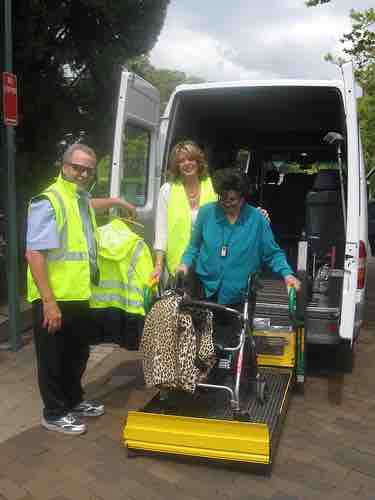Elder abuse is an umbrella term that refers to harm done to older adults. Typically, the harm is committed through intentional or neglectful acts by a caregiver or "trusted" individual that cause physical or emotional harm. A significant factor that distinguishes elder abuse from other types of harmful behavior involves the commission of harms where there is an expectation of trust extending from the older person to his abuser .

Elder Abuse
Imagine if the people elders depended on the most, such as these community transport service workers, were to breach that trust and abuse them.
Types of Elder Abuse
Elder abuse is illegal; special protections have been established to protect elders who are dependent upon others. However, because elder abuse is such a wide-reaching term, it can be difficult for different jurisdictions to define the term for legal usage. The main types of elder abuse include physical abuse, emotional abuse, financial abuse, sexual abuse, and neglect. Physical abuse of elders includes the hitting, punching, slapping, burning, pushing, kicking, restraining, or false imprisonment of elders. Additionally, giving an elder excessive or improper medication qualifies as physical abuse.
Emotional abuse includes shouting, swearing, frightening, or humiliating an elder. Financial abuse is the illegal or unauthorized use of a person's property, money, pension, or will. Sexual abuse for elders is when an elder is forced to take part in any sexual activity, including participating in conversations of an unwanted sexual nature. Elders with dementia may not be able to consent to any sexual activity whatsoever. Neglect includes depriving an elder of food, heat, clothing, or essential medication. Deprivation may be active or passive, occurring intentionally or from a lack of knowledge. Elder abuse is further subdivided into domestic elder abuse and institutional elder abuse. Domestic elder abuses are committed by family and friends of an older person; institutional elder abuse is committed by workers at residential facilities for elders, such as nursing homes.
Grooming
Regardless of whether the perpetrator is a family member, friend, or institutional caretaker for an older person, a central theme throughout all of these different types of abuses is the relationship of dependency of elders with those who care for them. Serious offenses can be committed by abusive groomers through grooming an older person by befriending him or her in order to build trusting relationships that can then be exploited. Older people living with no adult children nearby are particularly vulnerable to grooming by neighbors and friends who might seek to gain control of their estates. Unfortunately, the nature of dependency inherent to elder abuse can make cases of elder abuse especially difficult to prosecute. For example, an elder might not believe that someone close to him is taking his money or might be persuaded to report that he wanted it as such, when this wasn't the case. Elders are a particularly vulnerable population because they are dependent upon others and may even be senile, which makes it easier for them to be manipulated.
Consequences of Elder Abuse
Elder abuse can have serious consequences. Elder abuse can destroy a victim's quality of life by limiting his functional abilities, increasing dependency, increasing his sense of helplessness, increasing stress, worsening his psychological decline, inducing dementia, and risking malnutrition or overmedication. Elder abuse can even result in death.
Of course, the horrible consequences listed above can arise directly from the physical abuse of a victim. Additionally, while an elder may be too senile to comprehend the abusive relationship, stress can seep through his lack of comprehension and perpetuate and even exacerbate preexisting health problems. The risk of death for elder abuse victims is three times higher than for non-victims.